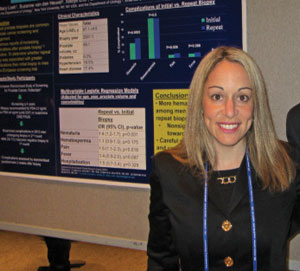PSA Velocity Risk Count Testing: A New Screening Method for Prostate Cancer

New studies* on PSA Velocity (PSAV) suggest that PSAV risk count, the number of times PSAV exceeds a specific threshold, could increase the reliability of screening for prostate cancer and of screening potentially for life-threatening tumors.
PSA Velocity is the rate of change in the PSA level over time.
Sustained rises in PSA indicate a significantly greater risk of prostate cancer, particularly high-grade disease.
These recent studies show the benefits of tracking a man’s PSA levels over time to help doctors more accurately assess risk of life-threatening prostate cancer.
“A persistently rising PSA is a harbinger for life-threatening prostate cancer,” said senior author William Catalona, MD, of Northwestern University Feinberg School of Medicine, Chicago. “Our study findings show looking at how much PSA changes over time helps distinguish which cancers are aggressive more so than a single PSA value.
“Risk count could represent a new way to screen for prostate cancer by focusing on men with the greatest risk of harmful prostate cancers,” said lead author Stacy Loeb, MD, a urologist in the Department of Urology and the Joel E. Smilow Comprehensive Prostate Cancer Center at NYU Langone.
“The goal of risk count is to help identify the aggressive, clinically significant prostate cancers before advanced symptoms develop, while decreasing the diagnosis of insignificant cancers,” she said.
Risk count is assigned in the following way:
Based upon the findings that an increased risk of aggressive prostate cancer is present if PSA goes up by more than 0.4ng/mL in consecutive years, a risk count of “2” is given to multiple increases of more than 0.4ng/mL.
One rise of more than 0.4 is given a risk count of “1.”
And with no increase of more than 0.4, the risk count is “0.”
Men with a risk count of “2” accounted for 40% of prostate cancer cases compared but only 4% of those with no cancer. After adjusting for age and PSA level, a PSAV risk count of 2 was associated with an 8.2 fold increased risk of prostate cancer and a 5.4 fold increase risk of aggressive Gleason score 8-10 prostate cancer on biopsy.
“Compared to PSA alone, PSAV risk count may be useful in reducing unnecessary biopsies and the diagnosis of low-risk prostate cancer,” Loeb said.
*Most recent study published in the British Journal of Urology International, February 2012











